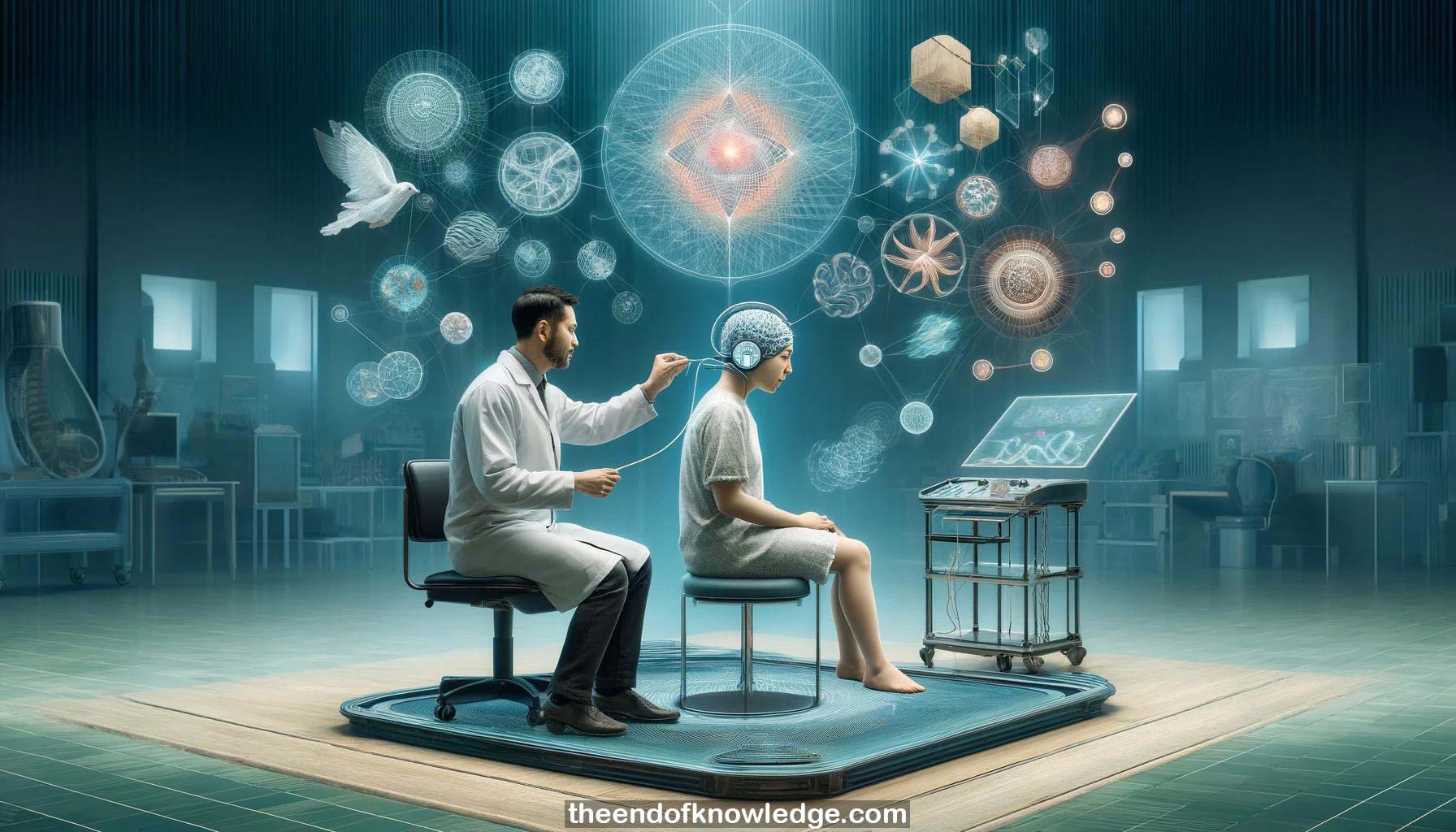 >
>
Concept Graph & Resume using Claude 3 Opus | Chat GPT4 | Llama 3:
Resume:
1.- Ren Xu gives a practical demonstration of using the MindBeagle system for assessment, communication, prediction and evaluation of DOC patients.
2.- MindBeagle uses EEG to measure brain activity while delivering auditory and tactile stimuli. The computer analyzes EEG data in real-time.
3.- Successful assessments enable yes/no communication with patients. Results reflect brain functions and can predict outcomes. Repeated stimulation may improve function.
4.- MindBeagle hardware includes a 16-channel wireless EEG headset, headphones for auditory stimuli, and 7 vibro-tactile stimulators on the body.
5.- The cube integrates the hardware components and connects to the laptop. It delivers auditory and tactile stimuli and records EEG.
6.- MindBeagle implements 6 paradigms: auditory evoked potentials, vibro-tactile with 2/3/7 stimulators, motor imagery, and resting state EEG.
7.- All paradigms assess consciousness. AEP and VT2 allow quick real-time assessments. VT3, VT7 and MI enable yes/no communication when successful.
8.- Assessment pages show real-time EEG, electrode map and signal quality, stimuli setup, and ERPs. Color indicates stimulation side.
9.- Quick test pages show a moving bar for correct classification of each trial, determining overall success at the end.
10.- Communication pages allow typing questions. Patients focus left for "no", right for "yes". Results appear after completing the question block.
11.- Paradigm durations are kept short (2.5-4 min) as DOC patients tire easily. Quick tests and communication are even shorter (0.5-1.5 min).
12.- Result pages show ERPs, significance, scalp maps, accuracy over averaging, and historical data. MI results show power changes during imagined movement.
13.- Live demonstration begins with Ren preparing the EEG cap on his colleague Vaishali. Signal quality is checked in the software.
14.- In the AEP assessment, Vaishali counts high tones and ignores low tones for 4 minutes. Accuracy is 59% due to some distraction.
15.- Quick AEP test is unsuccessful, likely due to imperfect signal-to-noise ratio and accuracy in the assessment. Prior data showed 95% accuracy.
16.- VT2 assessment has Vaishali count left wrist tactile stimuli for 2.5 min. 100% accuracy is achieved with high quality ERPs.
17.- VT2 quick test is successful with real-time short trial data matching the assessment well. High assessment accuracy enables successful quick tests.
18.- VT3 assessment adds ankle distractors. Vaishali achieves 100% accuracy counting right then left wrist stimuli with very high quality ERPs.
19.- Two communication runs ask Vaishali if she likes MindBeagle (yes - right) and if Ren is speaking Chinese (no - left). Both succeed.
20.- VT7 assessment and communication paradigms are briefly shown, similar to VT3 but with more distractors on the vibro-tactile stimulators.
21.- Motor imagery paradigm is shown, with assessment and communication based on imagining left/right hand movements. Tactile precursors improve accuracy.
22.- In response to a question, Ren states that dry EEG electrodes could work if signal quality is maintained, perhaps using a hybrid approach.
23.- Ren suggests vibro-tactile paradigms, especially VT2, are easiest for DOC patients due to the short duration enabling assessment within limited windows of responsiveness.
24.- Auditory and motor imagery paradigms are more challenging for DOC patients because of the longer duration, during which patients may fall asleep.
25.- The entire MindBeagle system fits in a backpack, enabling use with patients at home. The team traveled from Schiedeberg for this demonstration.
Knowledge Vault built byDavid Vivancos 2024